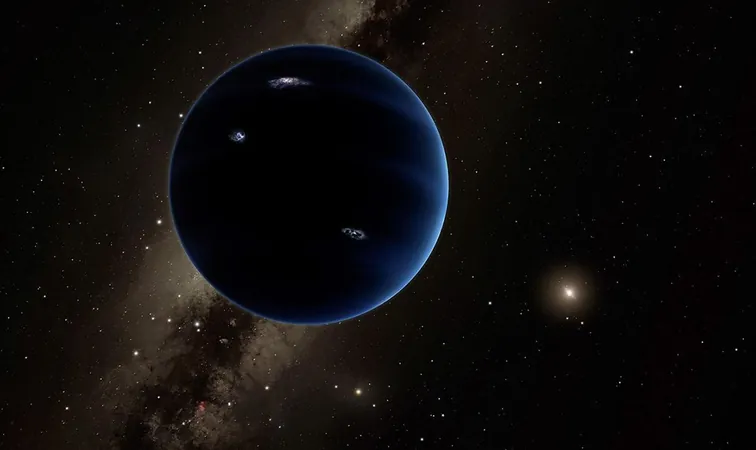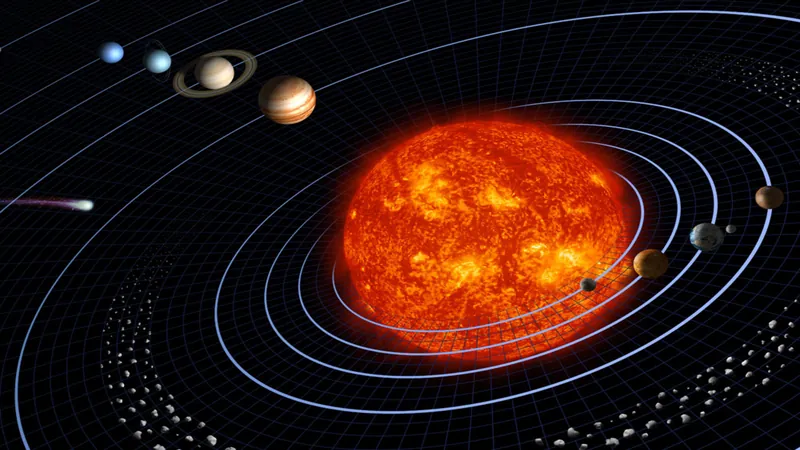
Is Planet 9 Finally Found? New Evidence Shakes Up Our Solar System!
2025-07-03
Author: Li
The hunt for a mysterious ninth planet in our Solar System has taken an exciting turn! For years, astronomers have been tantalized by the idea that an unseen Planet 9 is lurking in the depths of space, exerting gravitational influence on a cluster of distant icy objects.
Unlike the known planets, this hypothetical Planet 9 is believed to share similarities with Neptune and could be hanging out on a lengthy elliptical orbit nearly 300 Astronomical Units (AU) away—10 times farther from the Sun than Neptune!
The Challenge of Discovery
Despite numerous searches, finding this elusive planet has proven to be extraordinarily difficult. The very nature of its predicted orbit and distance means it reflects very little sunlight back to Earth, making it almost impossible to see. The uncertainty surrounding its orbital parameters complicates search efforts even further.
Invisible to Our Eyes
Detecting Planet 9 involves a battle between faint light and thermal radiation physics. If this Neptune-like giant exists out there, it would appear 10,000 times dimmer than Neptune at visible wavelengths. However, thanks to infrared technology, things look a bit more hopeful—thermal radiation has to travel only one way, making it about 100 times less faint and thus more detectable.
Groundbreaking Research from Taiwan
Enter Terry Long Phan, a PhD student from National Tsing Hua University in Taiwan. With a collaborative team across Asia and Australia, Phan scrutinized data from two far-infrared all-sky surveys, IRAS and AKARI, launched respectively in 1983 and 2006. Although any potential Planet 9 would have moved ever so slightly across the sky over the 23 years between these missions, this shift could finally help locate it!
Phan developed software to sift through infrared sources, identifying those that appear to have moved according to predictions. After extensive verification, only one intriguing candidate pair remained—an object that shifted 47.5 arcminutes during the span of 23 years.
A New Hope for Planet 9?
Could this be it? While it's too early to declare victory, if this discovery turns out to be a single, slow-moving celestial body, it could offer the first real observational evidence of Planet 9! However, simply knowing its position isn’t enough; follow-up observations are crucial to determine its precise orbit.
Phan suggests that advanced telescopes like the Dark Energy Camera on the Victor M. Blanco Telescope in Chile could provide the needed insights and possibly add a new member to our cosmic family.
Stay Tuned!
As our understanding of the cosmos evolves, who knows what astonishing discoveries await? The race to uncover Planet 9 continues!




 Brasil (PT)
Brasil (PT)
 Canada (EN)
Canada (EN)
 Chile (ES)
Chile (ES)
 Česko (CS)
Česko (CS)
 대한민국 (KO)
대한민국 (KO)
 España (ES)
España (ES)
 France (FR)
France (FR)
 Hong Kong (EN)
Hong Kong (EN)
 Italia (IT)
Italia (IT)
 日本 (JA)
日本 (JA)
 Magyarország (HU)
Magyarország (HU)
 Norge (NO)
Norge (NO)
 Polska (PL)
Polska (PL)
 Schweiz (DE)
Schweiz (DE)
 Singapore (EN)
Singapore (EN)
 Sverige (SV)
Sverige (SV)
 Suomi (FI)
Suomi (FI)
 Türkiye (TR)
Türkiye (TR)
 الإمارات العربية المتحدة (AR)
الإمارات العربية المتحدة (AR)